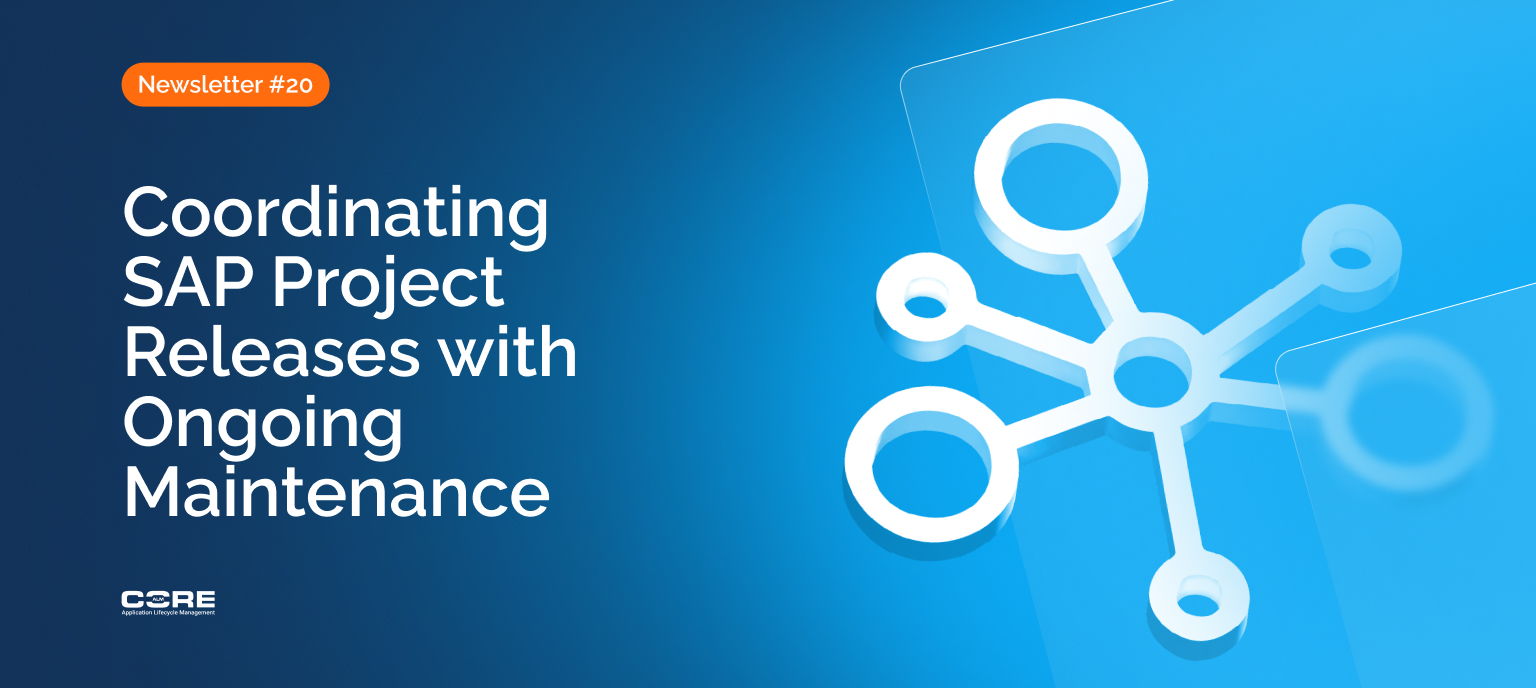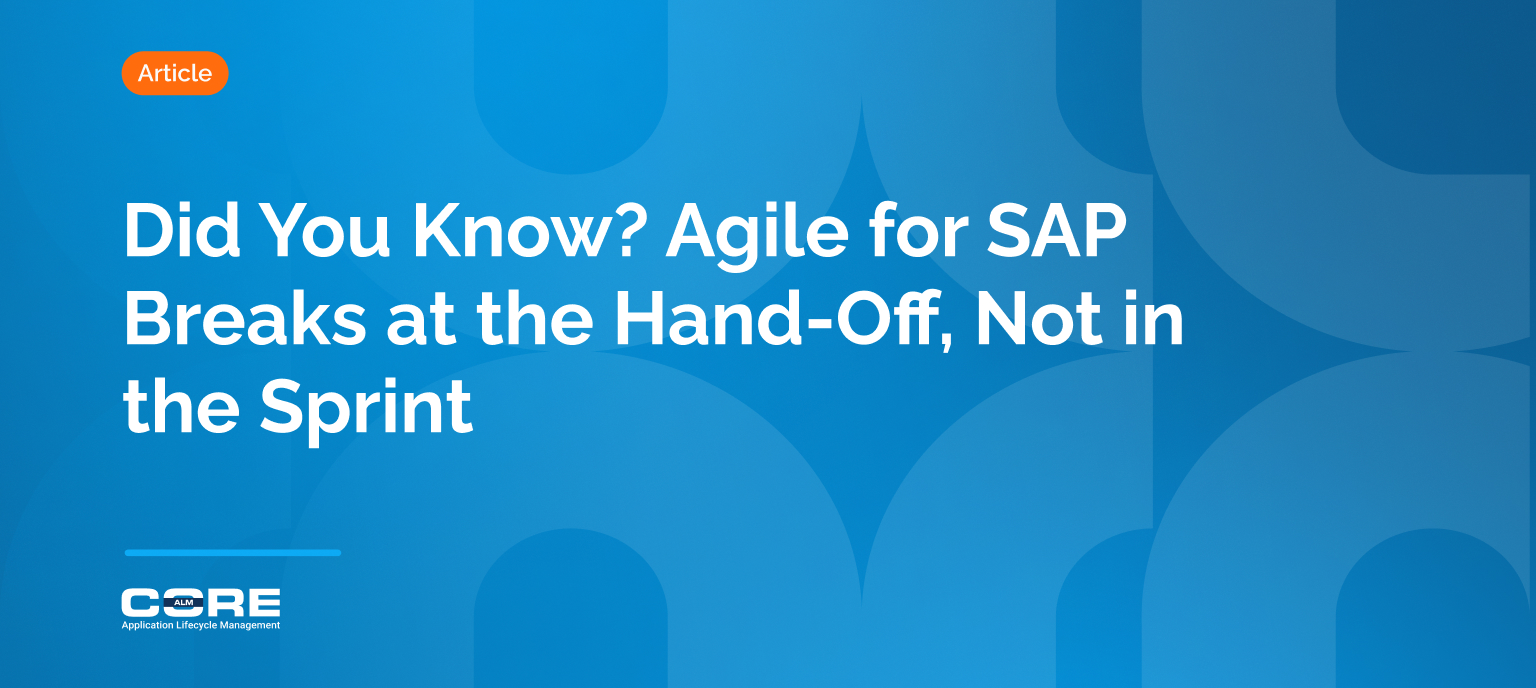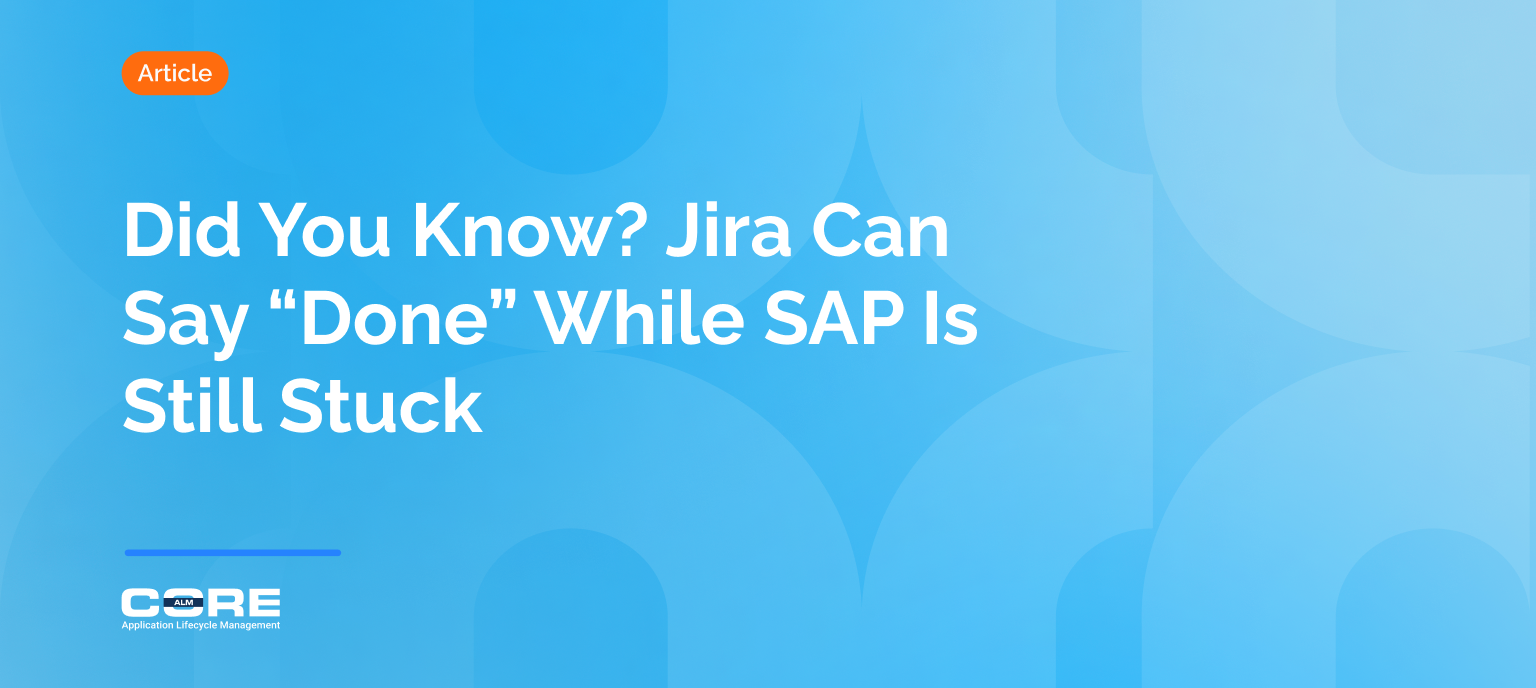Introduction
Automated retrofit keeps projects and maintenance in sync while reducing freezes and manual work.
In most SAP environments, projects and maintenance work follow different rhythms. Projects such as an SAP S/4HANA 2025 upgrade or a large functional rollout run for months, with dedicated landscapes and extended testing cycles. Maintenance, by contrast, delivers small but essential updates every week, including security patches, configuration tweaks, or urgent production fixes that cannot wait for the next project cutover.
When both streams operate in parallel, the core question becomes: how do you keep them coordinated without stalling either one?
For many teams, the answer has been to implement change freezes. During a project build, only emergency or high-priority fixes move forward, and even those must be merged manually into the project system. This protects the project landscape but adds significant effort and delay. Developers spend time reconciling transports instead of building, and maintenance teams lose momentum.
Automated retrofit provides a better balance. It allows approved maintenance changes to flow into the project track automatically, keeping both streams aligned and reducing manual effort.
Automated retrofit keeps projects and maintenance in sync while reducing freezes and manual work.
Why Coordination Matters
Parallel work should not mean duplication of effort.
Running maintenance and projects simultaneously is unavoidable. The business cannot pause while upgrades are underway. But when these streams are not connected, teams encounter predictable friction.
- Extended change freezes that slow or stop maintenance activity.
- Manual reconciliation to merge approved fixes into the project system.
- Delays in testing and cutover when late merges create new dependencies.
Automating retrofit removes much of that overhead. Instead of holding back maintenance or merging manually, SAP teams can let both streams move forward while approved changes are synchronized automatically between systems.
Parallel work should not mean duplication of effort.
Example: How Parallel Landscapes Stay in Sync
Automated transports keep projects and maintenance aligned.
Many customers run parallel SAP environments, including a maintenance landscape (DEV → QA → PROD) and a project landscape (often called N+1, usually configured as DEV’ → QA’ → PROD’). During large initiatives such as an SAP S/4HANA 2025 upgrade, both landscapes are active. Maintenance continues to handle production fixes in the current environment, while the project team works in a separate track preparing the future release.
Tight integration between ServiceNow and the SAP Transport Management System (STMS) makes automated retrofit possible. First, the integration ensures there is no conflict in the changed object. Then, a Transport of Copies (ToC) is automatically created in the N+1 environment when a maintenance change is approved and transported to production. This ToC carries the same change into the corresponding project DEV and QA systems, ensuring both tracks stay aligned.
The result is a balanced workflow. Maintenance teams continue releasing fixes without long freezes, and project teams always work from an environment that reflects the latest production state. Non-conflicting changes move automatically, while rare overlaps require manual review.
For organizations not yet using parallel landscapes, this represents a more advanced but attainable stage of SAP change management. It demonstrates how automation can reduce freezes, manual merges, and late rework while preserving system integrity.
Automated transports keep projects and maintenance aligned.
Integrated Governance Across Streams
A common approach for managing maintenance and project changes improves consistency and quality.
By linking ServiceNow change requests to SAP transports through CoreALM’s SAP Transport Management for ServiceNow, organizations gain unified visibility and control across both maintenance and project activity.
- Shared dashboards: Project and maintenance transports appear together, giving release managers a complete view of what is moving and when.
- Consistent approvals: Both streams follow the same risk and authorization chain, while retaining independent release schedules.
- Early conflict detection: Developers are alerted when overlapping object changes occur, allowing proactive coordination.
The same unified model extends beyond ServiceNow. CoreALM also provides SAP transport integration with Jira through the SAP Transport Management for Jira, and SAP transport management for Azure DevOps through the SAP Transport Management for Azure DevOps.
Each integration enables seamless synchronization of requirements, approvals, and transport status, giving organizations a single, traceable view of SAP change across tools.
One governance fabric across project and maintenance streams.
Conclusion: Projects Stay Current, Maintenance Stays Productive
SAP teams should not have to choose between project progress and operational agility. With automated retrofit and integrated governance, they can maintain both.
CoreALM’s integrations for SAP transport management with ServiceNow, Azure DevOps, and Jira streamline how changes move between project and maintenance landscapes. Maintenance teams continue delivering fixes without extended freezes. Project teams stay aligned with the latest production state. Developers spend less time on manual merges and more time delivering value.
The result is smoother upgrades, faster releases, and fewer surprises at go-live. With the right automation, SAP change management becomes a continuous, coordinated process that keeps innovation and stability moving at full speed.




